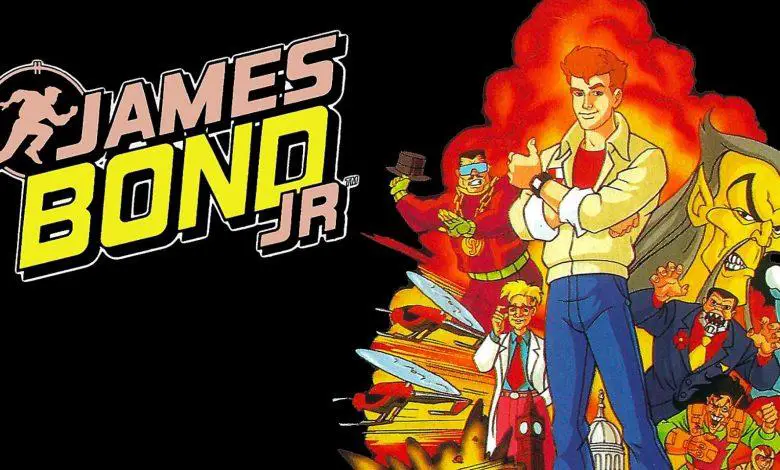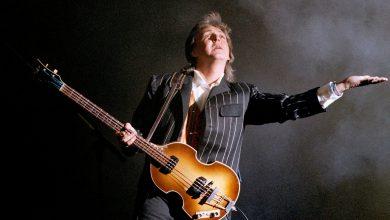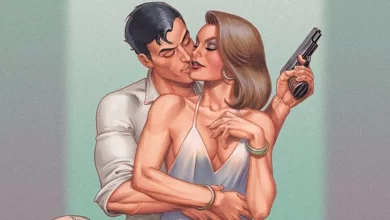what was the purpose to create james bond jr as an animated series ?
The Intriguing Reason.

James Bond, the quintessential British spy, has been a staple in popular culture for decades. From thrilling novels to blockbuster films, the character has been reimagined and reintroduced to audiences in various forms. Yet, one of the most intriguing adaptations of this iconic figure came in the early 1990s, not as a suave adult spy, but as a spirited young adventurer in the animated series “James Bond Jr.” This article delves into the rationale behind this unique adaptation, exploring its creation, impact, and the legacy it left behind.
Key Takeaways
- “James Bond Jr.” was introduced to capture a younger audience and diversify the Bond brand.
- The animated series provided ample merchandising opportunities, from toys to video games.
- Familiar characters from the Bond films were reimagined for the series, bridging the gap between the original movies and the animation.
- Despite its short run, “James Bond Jr.” remains a unique and memorable chapter in the Bond franchise’s history.
- The series showcased the versatility of the Bond universe, proving its adaptability across different media and audiences.
What was the purpose to create James Bond Jr. as an animated series?
James Bond, the suave British spy with a license to kill, has been a cultural icon since Ian Fleming introduced him in the 1950s. The character’s popularity led to a series of blockbuster films, novels, and merchandise. But in the early 1990s, a surprising addition to the Bond franchise emerged: “James Bond Jr.”, an animated series. Why was such a series created, especially when the primary Bond films were known for their adult themes?
A New Audience: Targeting the Younger Generation
One of the primary reasons for introducing “James Bond Jr.” was to capture a younger audience. The James Bond films, while popular, were primarily targeted at adults due to their mature themes, violence, and sensuality. By creating an animated series:
- Engaging Young Viewers: Animation has always been a medium that resonates with children. By presenting James Bond’s adventures in this format, the creators could ensure a younger demographic would be engaged.
- Building Brand Loyalty: Introducing children to the world of James Bond at an early age could foster brand loyalty, ensuring that they would be interested in the films as they grew older.
Merchandising Opportunities
The 1980s and 1990s saw a boom in merchandise-driven children’s programming. Shows like “Transformers” and “He-Man” were not just television series but also massive toy lines. With “James Bond Jr.”:
- Toys and Action Figures: The series introduced a range of characters, both heroes and villains, which translated into a line of action figures and playsets.
- Video Games: The popularity of the series led to the development of video games for platforms like the NES and SNES.
- Other Merchandise: From lunch boxes to school supplies, “James Bond Jr.” became a brand in its own right.
Diversifying the Bond Brand
The James Bond films, while successful, followed a predictable pattern. By introducing an animated series, the creators could:
- Experiment with Storylines: Animation allows for more fantastical plots, which might not fit within the live-action Bond universe.
- Introduce New Characters: While James Bond Jr. was the titular character, the series introduced a host of new characters, each with their unique traits and backgrounds.
- Modernize the Franchise: By the 1990s, the Bond films had been around for nearly three decades. The animated series offered a chance to modernize the franchise and make it relevant to a new generation.
Educational Aspects
While primarily an action-adventure series, “James Bond Jr.” also had subtle educational undertones:
- Geography: The series took viewers around the world, introducing them to different cultures and landmarks.
- Problem-Solving: Each episode often revolved around James and his friends solving mysteries, teaching children the importance of critical thinking.
- Moral Lessons: Like many children’s shows, “James Bond Jr.” often ended with a moral lesson, teaching values like honesty, bravery, and friendship.
The Competition
The early 1990s was a golden era for animated series. With shows like “Batman: The Animated Series”, “X-Men”, and “Spider-Man” dominating the airwaves, there was a need for unique content:
- Standing Out: By leveraging the James Bond brand, the creators could ensure that “James Bond Jr.” stood out in a crowded marketplace.
- Leveraging Existing Popularity: The James Bond name was already well-known, giving the animated series a head start in terms of brand recognition.
Frequently Asked Questions (FAQ)
1. Who is James Bond Jr. in relation to James Bond?
James Bond Jr. is often misconceived as the son of James Bond, but in the animated series, he’s introduced as James Bond’s nephew. This relationship allowed the creators to draw a connection to the iconic spy while establishing a younger protagonist for the target audience.
The character of James Bond Jr. was designed to embody the charm, intelligence, and resourcefulness of his famous uncle. However, he was also given traits that resonated with a younger audience, such as being a student and having a close-knit group of school friends who often joined him on his adventures.
The decision to make him James Bond’s nephew, rather than a direct descendant, provided flexibility in storytelling. It allowed the series to maintain a connection to the established Bond universe while also crafting its unique narrative and character dynamics.
2. Were any characters from the original Bond films featured in the animated series?
Yes, several characters from the original Bond films made appearances in the “James Bond Jr.” animated series. However, these characters were often reimagined or adapted to fit the tone and style of the show, which was geared towards a younger audience.
For instance, characters like “Jaws” and “Oddjob”, who were iconic villains in the Bond films, were reintroduced in the animated series with slightly altered personas. They retained some of their original characteristics but were often portrayed in a less menacing manner to suit the show’s target demographic.
Additionally, while the series introduced a plethora of new characters, the inclusion of familiar faces from the Bond films served as a nod to longtime fans and helped bridge the gap between the animated series and the original movies.
3. How long did the James Bond Jr. series run?
“James Bond Jr.” had a relatively short run compared to some other animated series of its time. It aired from 1991 to 1992. Despite its brief duration, the series managed to produce a significant number of episodes.
In its single season, “James Bond Jr.” released 65 episodes. This high episode count within a short timeframe was not uncommon for animated series during this era, especially those that were tied to merchandise lines.
The series, while short-lived, left a lasting impression on its viewers and remains a unique chapter in the history of the James Bond franchise.
4. How was the animation style of James Bond Jr. received by audiences?
The animation style of “James Bond Jr.” was reflective of many cartoons from the early 1990s. It had a distinct look, with vibrant colors and dynamic action sequences. However, reactions to the animation were mixed.
Some fans appreciated the animation for its nostalgic value and felt it captured the essence of early ’90s cartoons. They believed it was a fitting style for an action-packed series aimed at children.
On the other hand, some critics felt that the animation didn’t live up to the standards set by other contemporary animated series. They believed that, given the legacy of the James Bond name, the series could have benefited from a more polished and sophisticated animation style.
5. Was there a specific reason the series ended after one season?
The decision to end “James Bond Jr.” after just one season was influenced by several factors. While the series had its dedicated fan base, it faced stiff competition from other popular animated shows of the era.
Ratings play a crucial role in the longevity of a television series. “James Bond Jr.” had to compete with other established and emerging animated series, which made it challenging to secure consistent high viewership.
Moreover, the merchandising aspect, though initially promising, might not have met the expected sales targets. In the world of children’s programming, the success of associated merchandise can often determine the fate of the show itself.
6. How does the tone of James Bond Jr. differ from the original Bond films?
“James Bond Jr.” was designed with a younger audience in mind, and as such, its tone was considerably lighter than the original Bond films. While the films often delve into complex geopolitical issues, intense action sequences, and mature themes, the animated series was more straightforward and kid-friendly.
The series still maintained elements of espionage, adventure, and intrigue, but these were presented in a way that was accessible to children. The villains, for instance, were less menacing, and their plans, while grandiose, often had a comedic or fantastical element to them.
Furthermore, the series emphasized values like friendship, teamwork, and problem-solving, making it not just an action-packed adventure but also a source of positive messages for its young viewers.
7. Were there any spin-offs or sequels to James Bond Jr.?
While “James Bond Jr.” was a unique addition to the Bond franchise, it did not spawn any direct spin-offs or sequels. The series stood alone in its portrayal of a younger Bond and his adventures.
However, the character of James Bond Jr. did make appearances in other media. As mentioned earlier, there were video games based on the series, and the character was also featured in comic books.
Though there weren’t any direct continuations of the animated series, its existence expanded the Bond universe and showcased the versatility of the franchise.
8. How did Ian Fleming’s estate react to the animated series?
Ian Fleming’s estate, which oversees the rights to the James Bond character and stories, was supportive of the “James Bond Jr.” series. The creation of the animated series was a collaborative effort, with the estate being involved in the decision-making process.
The estate recognized the potential of introducing the Bond universe to a younger audience. They saw the animated series as an opportunity to expand the reach of the franchise and introduce the iconic spy to a new generation.
While the series took creative liberties and introduced new characters and storylines, it maintained the core essence of the Bond universe, which was likely a crucial factor in securing the estate’s approval.
9. How did the theme song of James Bond Jr. compare to the iconic Bond film themes?
The “James Bond Jr.” theme song was catchy and memorable, in line with many animated series of the time. It incorporated elements reminiscent of the classic Bond themes, such as the iconic guitar riff, but was tailored to suit the younger audience of the show.
While the original Bond film themes are known for their sultry vocals and orchestral grandeur, the “James Bond Jr.” theme was upbeat and energetic. It set the tone for the series, signaling action-packed adventures with a youthful twist.
Though it might not have the same timeless appeal as themes from the Bond films, the “James Bond Jr.” song is fondly remembered by those who grew up watching the series.
10. Were there any notable voice actors involved in the series?
“James Bond Jr.” had a talented voice cast, though many of the actors were not widely recognized outside of voice acting circles. Corey Burton, who voiced James Bond Jr., is a veteran in the industry, having lent his voice to numerous characters in various animated series and films.
Other cast members included Jeff Bennett, Julian Holloway, and Mona Marshall, all of whom have extensive voice acting credits. While the series didn’t boast big celebrity names, the cast brought the characters to life with enthusiasm and skill, contributing to the show’s appeal.
Conclusion
The creation of “James Bond Jr.” as an animated series was a bold move, one that showcased the adaptability and enduring appeal of the James Bond franchise. While it may have been a departure from the traditional portrayal of the iconic spy, it offered a fresh perspective and introduced the world of espionage to a younger generation. In retrospect, “James Bond Jr.” serves as a testament to the timeless allure of the Bond character, proving that, whether in live-action films or animated adventures, the spirit of James Bond can captivate audiences of all ages.











